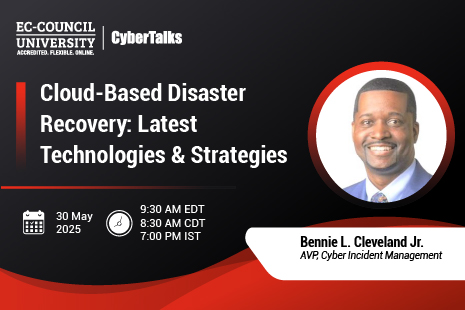As business environments grow increasingly complex, it’s more important than ever that IT and cybersecurity professionals come together to utilize proven frameworks capable of guiding a comprehensive, systematic assessment of an organization’s IT risks. The OCTAVE model is widely regarded as the best framework of its kind, so let’s explore what it is and why it matters.
What Is the OCTAVE Threat Model?
The Operationally Critical Threat, Asset, and Vulnerability Evaluation (OCTAVE) is a framework used to assess an organization’s environment and determine IT risks. Because OCTAVE is flexible, it can be adapted to fit the needs of practically any organization while only requiring a small team of cybersecurity, IT, and operations professionals to collaborate on the endeavor.
When applying the OCTAVE framework to a business, it’s important to know that the standard model won’t always fit an organization. As such, several variations have been developed, including OCTAVE-S (used when the entire team already has extensive knowledge about the organization’s environment), OCTAVE Allegro (which is simpler and more suitable for small teams), and OCTAVE Forte (the most adaptable variation yet). You might also devise a hybrid approach to find what works best for your business.
No matter which variation of OCTAVE you are using, you should have peace of mind knowing that it was developed for the US Department of Defense at Carnegie Mellon University (CMU) in 2001 and has been used and proven effective for over twenty years now.
Benefits of the OCTAVE Threat Model
There are a number of benefits to using the OCTAVE threat model, but here’s a look at the most significant.
- Effective: OCTAVE focuses on the organization’s most critical assets, ensuring that the biggest results are seen with the least effort.
- Fast: While complex, the OCTAVE model is one of the most efficient for discovering, prioritizing, and mitigating risks—making it both fast and thorough.
- Actionable: Implementing the OCTAVE threat model at once can be exhausting as it’s designed to be implemented in parts. This is why it is broken up into three phases, with each phase further broken up into processes.
- Comprehensive: The biggest advantage of the OCTAVE threat model is how much it covers. That is why it has been used by the Department of Defense and countless other organizations for over two decades.
With these benefits in mind, let’s dive into the implementation process, which can initially seem like a momentous task.
How to Implement the OCTAVE Threat Model
Implementing the OCTAVE threat model is not a task you can undertake on a random afternoon. In truth, the threat model requires hundreds of pages to thoroughly explain and even more to delve into the complexities of adapting and applying the framework to any organization. CMU has extensive documentation for that.
However, before diving into the complex documentation on implementing the OCTAVE threat model, it’s valuable to take a more high-level approach to begin preparations for implementation and garner resources for the same. As such, here’s a big picture view of what the OCTAVE threat model takes to implement.
The Three Phases of Implementation
In general, implementing the OCTAVE threat model will require a three-phase approach. The three phases are as follows:
- Create a profile of all of your assets and their relevant threats. This will require a team to sit down and analyze your organization’s IT assets and what is already being done to protect them. You can find gaps in the current security measures and identify the associated risks.
- Identify vulnerabilities within your organization’s infrastructure. Once your team has identified vulnerabilities, you must move forward with new policies and procedures to help eliminate and manage them. This phase will require multiple tactics to be employed, including penetration testing.
- Define a security risk management strategy. The final phase of implementation requires you to define remaining risks and prioritize them, and move forward with creating a plan for mitigating and managing security risks in the long term. This plan will need to be reviewed and adapted often.
On paper, it might sound quite simple. However, analyzing, strategizing, and implementing such a comprehensive framework takes a great deal of time. Whether it takes weeks or months to complete will depend upon the size of your team, your organization’s complexity, whether someone is highly familiar with the framework, and/or your organization’s architecture to lead the initiative.
Common Techniques to Utilize
Throughout each phase of the implementation process, your team should be prepared to utilize various testing and analysis tools and methods to ensure no stone is left unturned and no scenario left unconsidered. As such, here are some of the common techniques you should plan to familiarize yourself with:
- System audits will reveal information about the structure of your organization’s network and systems. This will begin to show you where assets are stored, how they connect, and who has access to what.
- Penetration testing will help your team reveal vulnerabilities in its system and better understand the access points that need to be protected, thereby forming the foundation for much of the knowledge that must be discovered to successfully implement OCTAVE.
- Risk assessments will be conducted in almost every stage of the implementation process and require a detailed plan that prioritizes each risk and lays out mitigation and prevention strategies.
Because the OCTAVE threat model is most often applied in enterprise settings, likely, most of your IT and cybersecurity personnel will already be using some or all of these techniques in their routine checks and monitoring practices. For smaller organizations unfamiliar with these techniques, it’s important to thoroughly understand them and how they are best implemented before utilizing them.
Best Practices to Follow
In addition to familiarizing yourself with the above techniques and methods, you’ll also want to follow several best practices to ensure your OCTAVE implementation project goes on without delay or re-work.
- Incorporate industry-specific guidelines and best practices, such as HIPAA, into the framework before starting.
- Plan to distribute questionnaires to develop knowledge of the organization’s operations, assets, and staff.
- Involve senior management early on in the process to get their questions, concerns, and input.
- Map out the most important informational assets, like the organization’s network architecture configuration.
- Always prioritize risks in accordance with actual business impact and make sure risks are being addressed in order of highest priority.
Keeping these best practices in mind will help you prepare to dive into the in-depth OCTAVE implementation process, as laid out by CMU. However, that’s far from the only thing you can do to prepare for successful threat modeling with OCTAVE.
Learn How to Apply the OCTAVE Threat Model
The OCTAVE threat model is a prime example of advanced methodology at work in a practical, straightforward manner. While there’s a lot to learn in order to implement the OCTAVE threat model, with over 20 years in use by both government and private organizations, it is a leading cybersecurity framework. So, how can you use it?
Getting certified as a Threat Intelligence Analyst through EC-Council’s Certified Threat Intelligence Analyst (C|TIA) program can help you apply advanced methods like OCTAVE threat modeling efficiently and effectively. Interested in getting to know the curriculum of this extensive program? Explore C|TIA now.
References
Albert, C., et al. (1999 September). Operationally Critical Threat, Asset, and Vulnerability Evaluation (OCTAVE) Framework, Version 1.0. Carnegie Mellon University. https://resources.sei.cmu.edu/library/asset-view.cfm?assetid=13473
About the Author
Sydney Chamberlain is a content writer specializing in informational, research-driven projects.










